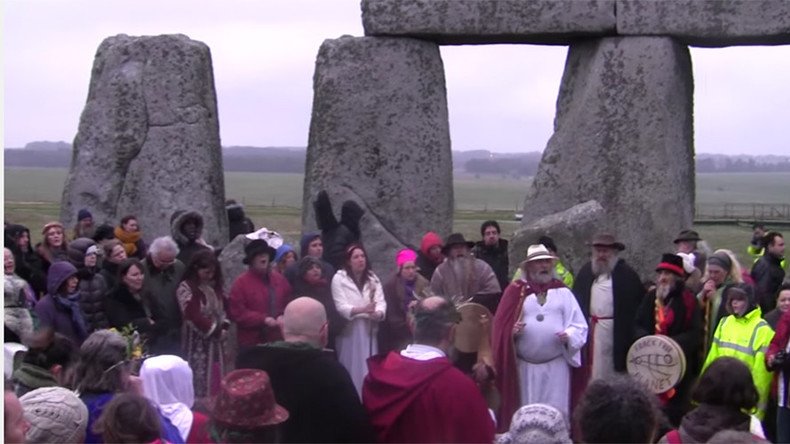Pagans celebrate first day of spring at Stonehenge during vernal equinox (VIDEOS, PHOTOS)

Spring is officially here, according to the astronomical calendar. The arrival of the vernal equinox in the Northern Hemisphere is when the sun shines directly on the equator, giving us almost equal amounts of day and night.
The spring equinox occurred at 6:29am EDT (10:29 GMT) in the northern hemisphere as the sun crossed directly over the Earth’s equator, officially heralding the season of spring.
Today is the vernal equinox -- the first day of astronomical spring in the Northern Hemisphere. Learn more: https://t.co/a0S9IeLD0apic.twitter.com/6VARgGXmCN
— NASA Sun & Space (@NASASun) March 20, 2017
Today is but one of two days each year when the line dividing day from night passes through the Earth’s poles. Happy Vernal #equinox. pic.twitter.com/VB3gzImido
— Brian Greene (@bgreene) March 20, 2017
The spring equinox takes place on March 20 or 21 every year as part of four seasonal astronomical events that impact the earth – the autumnal equinox which will mark the beginning of autumn on September 22 and the summer and winter solstices.
Happy #VernalEquinox. Learn the #science behind the first day of Spring. https://t.co/HrYTO2MMulpic.twitter.com/pWZoYGHXq8
— nnpsadulteducation (@nnpsadulted) March 20, 2017
After the equinox, Earth eventually reaches a point where its tilt is at the greatest angle to the plane of its orbit. This is the ‘solstice point’ where one half of the planet is receiving the most daylight and the other the least.
It happens twice a year, giving us our longest and shortest days and marking the transition to summer and winter.
Today is the Spring Equinox pic.twitter.com/B2KF7KbQuO
— Prof. Antonio Paris (@AntonioParis) March 20, 2017
Today is the first day of Spring. Happy #VernalEquinoxpic.twitter.com/x135Xp6qBW
— Space Frontier (@SpaceFrontier) March 20, 2017
The vernal equinox is celebrated by pagans and wiccans as a time of rebirth and renewal. ‘Ostara’ is one of eight holidays, known as ‘sabbats’, on the modern pagan calendar.
The Anglo-Saxon and Germanic goddess of fertility, Ēostre, aka Ostara is honored at this time, with similar gifts to the Christian celebration of Easter – eggs, rabbits and sweets, according to Beliefnet.
Many observers of Ostara celebrate the festival at England’s famous prehistoric monument, Stonehenge, in a manner similar to solstice celebrations. People gathered at the site before sunrise Monday to mark the occasion.
Stonehenge #Spring#Vernal#Equinoxpic.twitter.com/7eik3zvjiK
— Stonehenge U.K (@ST0NEHENGE) March 20, 2017
Stonehenge Spring Equinox pic.twitter.com/Pqzez4D6AK
— Stonehenge U.K (@ST0NEHENGE) March 20, 2017
Stonehenge Spring Equinox pic.twitter.com/nPrK39kfFE
— Stonehenge U.K (@ST0NEHENGE) March 20, 2017













